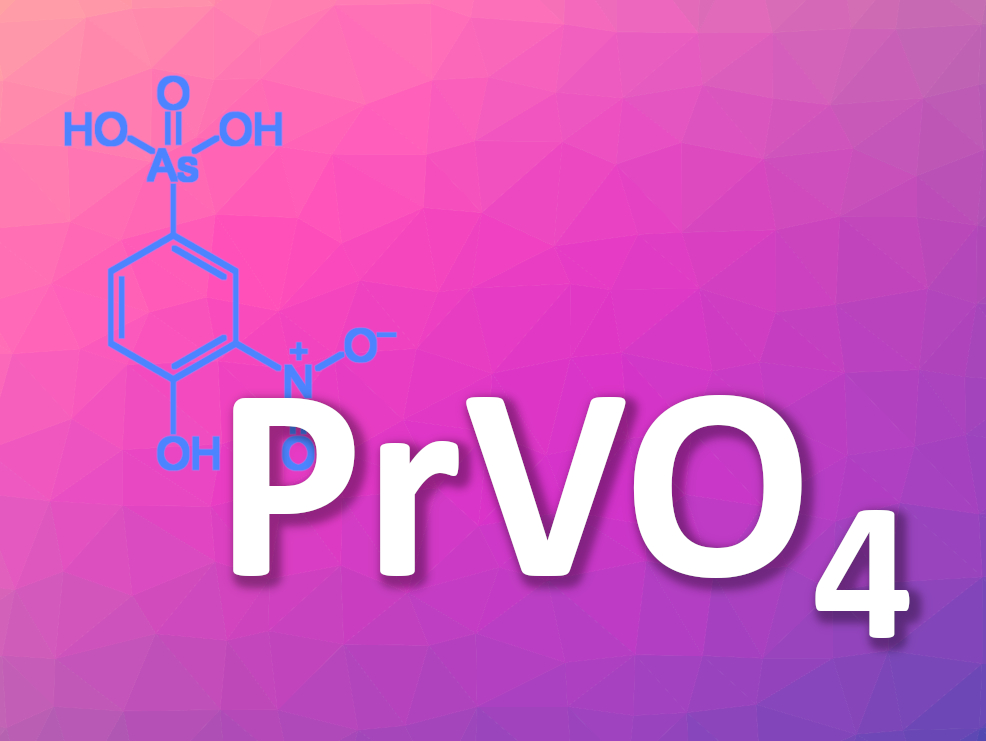Arsenic-containing compounds can occur in Nature and are also used, e.g., in medications such as roxarsone (4-hydroxy-3-nitrophenylarsonic acid, pictured in blue). Roxarsone is still used as an antibiotic in animal husbandry in some countries. Arsenic is toxic, and its detection in, e.g., water or foods is, thus, important. Electrochemical sensors can be used for this.
Yung-Fu Hsu, Sea-Fue Wang, National Taipei University of Technology, Taiwan, and colleagues have used praseodymium vanadate (PrVO4) nanoparticles to construct an electrochemical sensor for the detection of roxarsone. The team first prepared PrVO4 nanoparticles from praseodymium (III)nitrate hexahydrate and ammonium metavanadate. The resulting precipitate was calcined at 600 °C. They used screen-printed carbon electrodes (SPCEs) as a substrate for the sensor. The SPCEs were coated using a suspension of the nanoparticles and dried to obtain PrVO4/SPCE electrodes.
Using the resulting electrodes, the researchers tested samples of chicken meat, eggs, and human urine for roxarsone. The electrode is used for an electrochemical reduction of the nitro group in roxarsone to form a hydroxylamine. Amperometric measurements allowed the team to determine the concentration of roxarsone in the samples. The PrVO4/SPCE sensor has a high sensitivity for roxarsone and a low detection limit and could, thus, provide a platform for detecting the compound in real-life samples.
- Fabrication of Praseodymium Vanadate Nanoparticles on Disposable Strip for Rapid and Real-Time Amperometric Sensing of Arsenic Drug Roxarsone,
Balasubramanian Sriram, Sakthivel Kogularasu, Yung-Fu Hsu, Sea-Fue Wang, Jinn-Kong Sheu,
Inorg. Chem. 2022.
https://doi.org/10.1021/acs.inorgchem.2c02388




